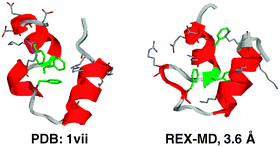Implicit modeling of nonpolar solvation for simulating protein folding and conformational transitions
Abstract
Accurate description of the

* Corresponding authors
a
Department of Molecular Biology, The Scripps Research Institute, 10550 North Torrey Pines Road, La Jolla, USA
E-mail:
brooks@scripps.edu
Fax: (858) 784 8688
Tel: (858) 784 8035
Accurate description of the

 Please wait while we load your content...
Something went wrong. Try again?
Please wait while we load your content...
Something went wrong. Try again?
J. Chen and C. L. Brooks III, Phys. Chem. Chem. Phys., 2008, 10, 471 DOI: 10.1039/B714141F
To request permission to reproduce material from this article, please go to the Copyright Clearance Center request page.
If you are an author contributing to an RSC publication, you do not need to request permission provided correct acknowledgement is given.
If you are the author of this article, you do not need to request permission to reproduce figures and diagrams provided correct acknowledgement is given. If you want to reproduce the whole article in a third-party publication (excluding your thesis/dissertation for which permission is not required) please go to the Copyright Clearance Center request page.
Read more about how to correctly acknowledge RSC content.
 Fetching data from CrossRef.
Fetching data from CrossRef.
This may take some time to load.
Loading related content
